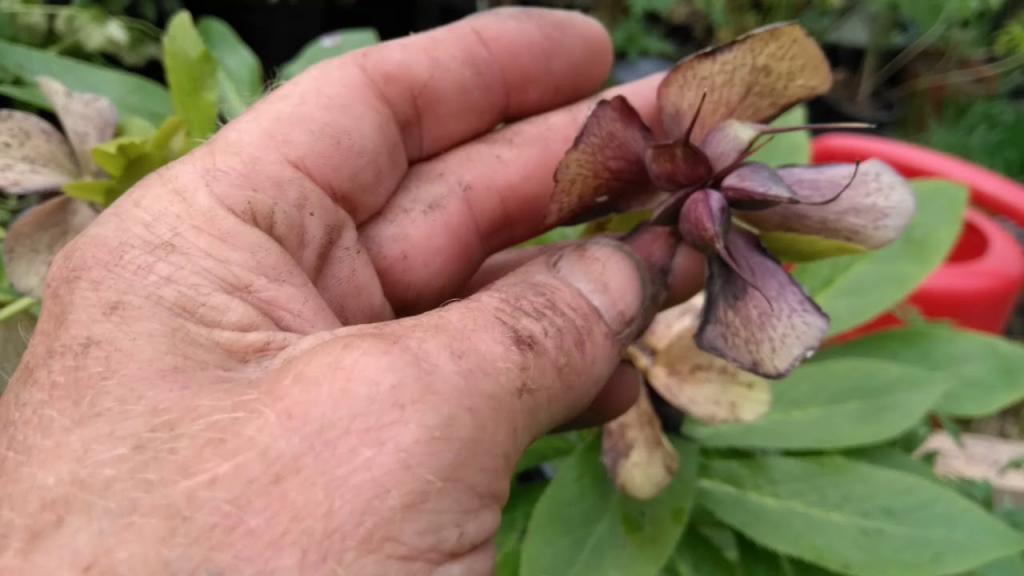Hellebores bring charming late winter and early spring color to shady garden beds. Starting these lovely perennials from seed can be an economical way to add them to your landscape. However, hellebore seeds have particular needs when it comes to planting time for good germination rates. Read on to learn the optimal time to sow your hellebore seeds.
Why Planting Time Matters
Hellebore seeds go through a natural cycle of warm and cold periods in order to germinate successfully. This is known as stratification. In nature, the seeds mature and drop to the ground in summer They experience warm soil temperatures at first, followed by decreasing temps as autumn approaches The cold, wet days of winter provide the moist chilling period the seeds require.
When you plant purchased or collected hellebore seeds at the right time, you mimic this natural sequence. Proper timing kickstarts the stratification process and boosts your chances of growing lots of seedlings.
When to Plant Outdoors
Sowing hellebore seeds outdoors at the end of summer is ideal for the highest germination rates. This gives them a dose of summer warmth followed by colder fall and winter weather.
The best months are July, August, and September. Scatter seeds directly in prepared garden beds during this timeframe. The soil stays warm long enough for the seeds to absorb moisture and begin the germination process. As temperatures cool off, the natural chill period takes over.
You’re likely to see seedlings emerging in late winter and early spring after fall sowing The timing varies based on weather and your climate zone Proper planting in summer sets your seeds up to successfully overwinter and sprout when conditions improve,
Starting Seeds Indoors
It’s also possible to start hellebore seeds indoors or in a greenhouse. This method works best if you need to plant outside of the optimal late summer window. You’ll have to recreate the warm, then cold stratification sequence artificially.
Follow these steps for indoor planting:
-
Sow seeds in containers of seed starting mix anytime from early spring through fall.
-
Provide warmth by placing pots on top of a refrigerator or furnace, or use a heat mat or grow lights to maintain 70°F.
-
Allow seeds to absorb moisture and experience 6-8 weeks of warm temperatures.
-
Move containers to a cool spot around 50°F and keep moist for another 4-6 weeks.
-
You should see germination and growth within 8-10 weeks total.
-
Harden off seedlings and transplant outdoors after the last spring frost.
This process mimics summer warmth followed by cooler fall temperatures. With the right timing and temperatures, you can successfully grow hellebores from seeds started indoors.
Tips for the Best Results
Follow these tips in addition to proper planting times for your highest hellebore germination rates:
-
Sow seeds in loamy, well-draining soil enriched with compost or leaf mold.
-
Barely cover seeds with soil – they need light to germinate.
-
Keep seeds and seedlings consistently moist but not soggy.
-
Thin seedlings to at least 18 inches apart once 2-3 true leaves emerge.
-
Provide semi-shade in hot summer climates once established.
-
Amend planting sites with lime if needed to raise pH towards neutral.
-
Mulch around plants in fall but avoid smothering emerging growth.
Ideal Hellebore Seed Varieties
Many stunning hellebore species and hybrids can be started from seed. Here are some top varieties for seed planting:
-
Christmas rose – Large white blooms on this earliest bloomer. Zones 4-9.
-
Lenten rose – Purple, pink, white, or yellow single blossoms. Zones 4-9.
-
Corsican hellebore – Prolific delicate pink blooms with lovely foliage. Zones 6-9.
-
Stinking hellebore – Green bell-like flowers have reddish veins. Zones 5-9.
-
Hybrids – ‘Ice N Roses’ series offers rich colors on sturdy plants.
Have fun growing a diverse hellebore collection from seeds! Just be sure to sow them at the right time to satisfy their stratification requirements. With proper planting times, you’ll be rewarded with jewel-toned winter blooms.
How I Grow Hellebores from Seed – Spring is the Perfect Time to Find Seedlings
FAQ
Are hellebores easy to grow from seed?
How late can you plant hellebores?
- A Complete Guide to Caring for Yuki Cherry Blossom Shrub - January 23, 2025
- Identifying Red Hot Poker Seeds: What to Look For When Harvesting Torch Lily Pods - January 23, 2025
- A Complete Guide to Harvesting Evening Primrose Seeds - January 23, 2025

